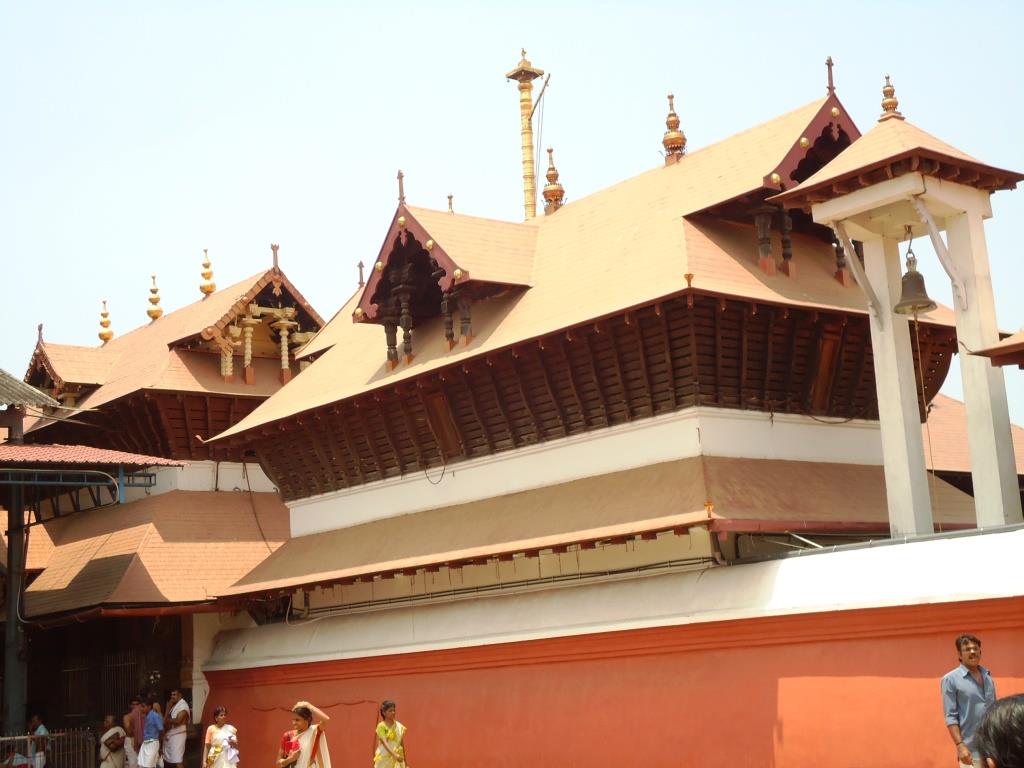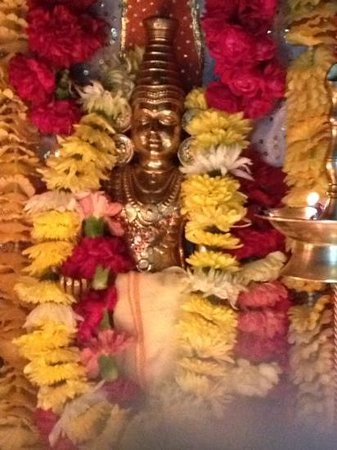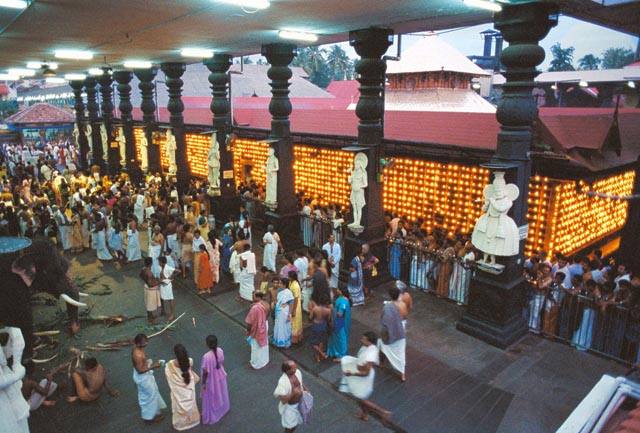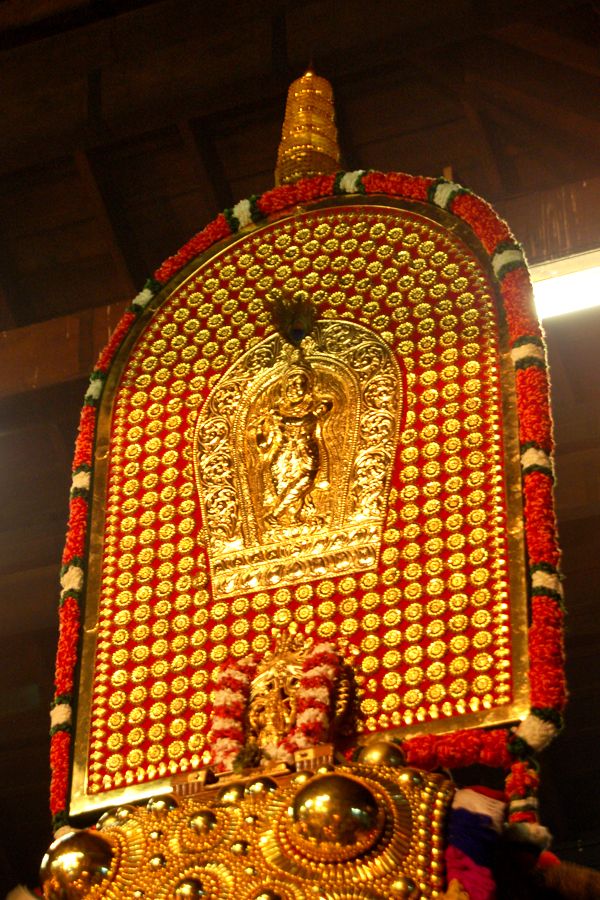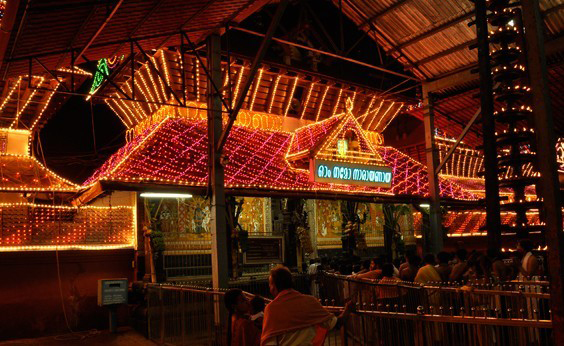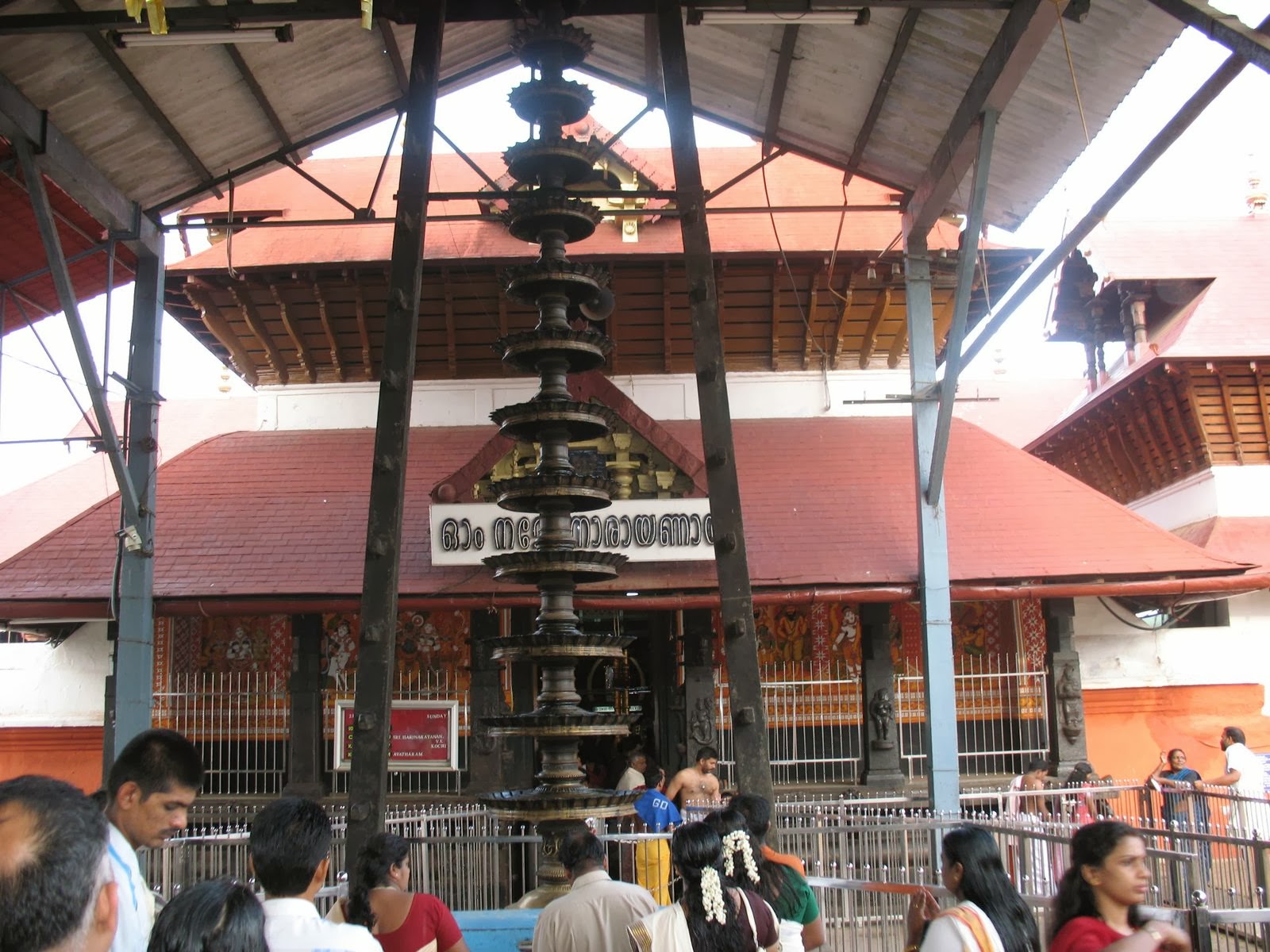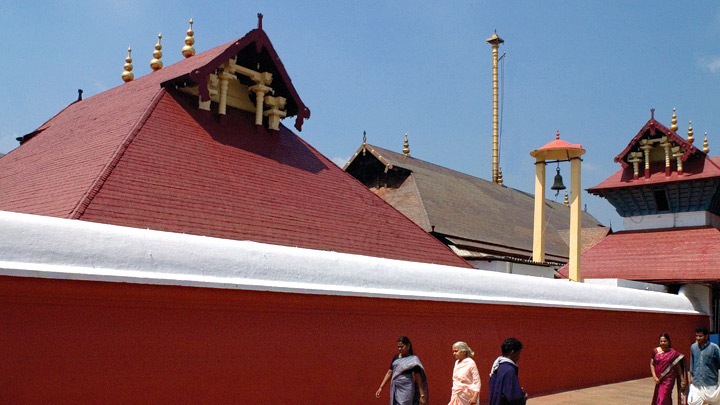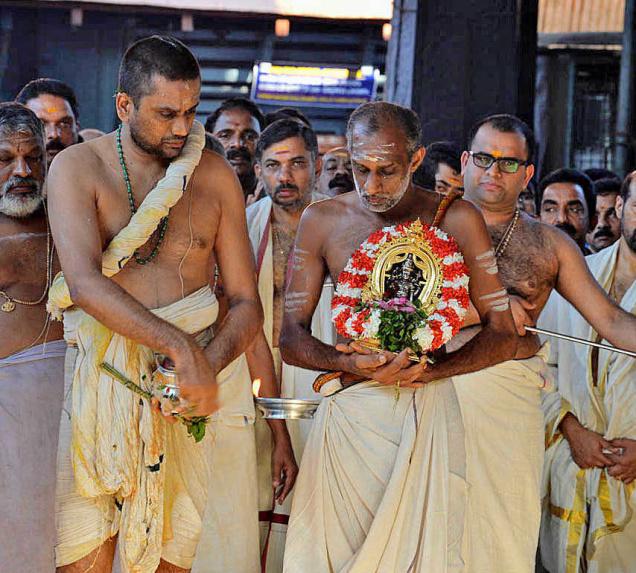Guruvayur Temple
About Guruvayur Temple
Guruvayur Sri Krishna Temple is a Hindu temple dedicated to the god Krishna (an avatar of the god Vishnu), located in the town of Guruvayur in Kerala, India. It is one of the most important places of worship for Hindus of Kerala and is often referred to as "Bhuloka Vaikunta” which translates to the "Holy Abode of Vishnu on Earth". The presiding deity of the Guruvayur Temple is Vishnu, worshipped in the form of Krishna. The central icon is a four-armed standing Krishna carrying the conch Panchajanya, the discus Sudarshana Chakra, the mace Kaumodaki and a lotus with a Holy basil garland. This image represents the majestic form of Vishnu as revealed to Krishna's parents Vasudeva and Devaki around the time of Krishna's birth; hence Guruvayur is also known as "Dwarka of South India". He is currently worshipped according to routines laid down by Adi Shankaraand later written formally in the Tantric way, the inter-religious spiritual movement that arose in medieval India, by Cennas Narayanan Nambudiri (born in 1427). The Cennas Nambudiris are the hereditary tantris (high priest) of the Guruvayur Temple. The temple (puja) routines are strictly followed. The tantri is available full-time at the Temple to ensure this. The Melsanti (Chief Priest) enters the sanctum sanctorum in the morning and does not drink anything up to the completion of "noon worships" at 12:30 PM. Non-Hindus are not allowed in the temple. According to legends, the deity worshipped here is more than 5000 years old. But there are no historical records to establish it. In the 14th century, "Kokasandesam" (a Tamil literary work), references to a place called Kuruvayur are made, as early as the 16th century (fifty years after Narayaniyam was composed) many references to Kuruvayur are seen. In ancient Dravidian languages, "kuruvai" means "sea", hence the village on the Malabar Coast may be called Kuruvayur. The earliest temple records date back to the 17th century. The earliest mention of the many important Vishnu temples of Kerala are found in the songs of Alwars, Tamil saints, whose time-line is not exactly fixed. Mamankam was a very famous local event at Tirunavaya, on the bank of Bharatappuzha. The battles between the Calicut under Zamorins and Valluvanad popularised Guruvayur Temple. Due to the prolonged battles, people across the riverbank started preferring Guruvayur. Even the Zamorin of Calicut become a devotee and thus his subjects followed him. The central shrine that see today is said to have been rebuilt in 1638 AD. "Viswabali" was performed later to propitiate all the spirits, good and bad. By the end of the 16th century Guruvayur had become the most popular pilgrimage centre in Kerala. There is a story about the emergence of Guruvayoor Temple in Narada Purana. King Parikshit, a descendant of Kuru dynasty, being the grandson of Arjuna and son of Abhimanyu, died due to the bite of Takshaka, a fierce snake, after the curse by a sage. His son, Janamejaya, tried to revenge this by conducting a fierce yaga named Sarpasatra. Many innocent snakes got killed in the ritual fire. But Takshaka did not die, because he had drunk Amrita. Thus, Janamejaya got cursed by snakes and he was affected with severe leprosy. Even though he tried his best to get cure, his condition did not improve. Thus, both his body and mind got weaker over time. At that time, sage Dattatreya appeared before him and requested him to worship Lord Mahavishnu of Guruvayoor to get cure of leprosy. He also told about the greatness of the idol there. That story is like this: Long ago, in Padma Kalpa, when Lord Brahma was conducting his task of creation, Lord Vishnu appeared before him. When Lord Brahma requested his wish to get salvation to himself and his creations, Lord Vishnu gave an idol of & made by himself. Later, in Varaha Kalpa, Lord Brahma gave this idol to a king named Sutapass and his wife Prasni, who were worshipping Lord Vishnu to get a son. They continued to worship, and finally Lord Vishnu appeared before them. He stated that he would himself be born as their son in four births, and in all those births, they would be blessed with the idol which they worshipped. Thus, in the first birth in Satya Yuga, the Lord was born as Prasnigarbha, the son of Sutapass and Prasni. Later, in Treta Yuga, when Sutapass and Prasni were born as Kashyapa and Aditi respectively, the Lord was born as Vamana, their son. Again later, in Treta Yuga itself, when they were born as Dasaratha and Kausalya respectively, the Lord was born as Rama, their son, and finally, in Dwapara Yuga, when they were born as Vasudeva and Devaki, the Lord was born as Krishna, their son. In all these births, the idol was also with them. Later, Lord Krishna, an avatar himself, took the idol to Dwaraka, and began to worship it.
At last, when the Lord was ascending to heaven after his avatar, he told to his friend and devotee Uddhava that Dwaraka would be submerged with sea within a week and everyone expect the idol he worshipped would be destroyed, so that the idol should be given to Brihaspati, the guru of devas and Vayu, the windgod. What Lord Krishna told exactly happened. Uddhava took the idol from the sea and gave it to Brihaspati and Vayu. Later, he went to Badaryashram to do penance. Brihaspati and Vayu went southwards with the idol. On the way, they saw a large, beautiful lake very close to the sea, which was full of lotuses of all colours. They entered there. They saw a huge forest near the lake. Everyone there was so exciting that even Indraloka would be defeated. Many birds were chirping, animals were walking through and fresh air was all there. When they walked through the place, they met with sage Parasurama, who took them to the place where his guru Lord Shiva and Goddess Parvati were sitting. All the three told about the greatness of the place they were standing. It is like this:
Long ago, Lord Shiva worshipped Lord Vishnu in the place which they were standing. The lake on the north side is known as Rudratheertham, as Rudra (Lord Shiva) bathed there before conducting poojas. Many years later, ten prince brothers named 'Prachetas' came to the place to get the title of Prajapati. Lord Shiva taught them a hymn named 'Rudrageetham', in praise of Lord Vishnu. They meditated with that hymn, and finally their wish was fulfilled. When Brihaspati and Vayu heard the story, they realized that the place itself is suitable for consecrating the idol. Thus, they called Vishwakarma, the architect of devas. He built a temple within minutes and the idol was consecrated there. As it was Guru and Vayu who consecrated the idol of Lord Vishnu there, the place came to be known as Guruvayoor and the idol came to be known as "Guruvayoorappan".
The temple is located about 29 km from Thrissur.
By Air: The nearest airport (75 km) is Cochin International Airport, at Nedumbassery near Kochi.
By Rail: The nearest railway station is at Guruvayur. Trains that run from here are Thiruvananthapuram Central-Guruvayur Intercity, Guruvayur-Kollam-Punalur Intercity and Guruvayur-Chennai Egmore express train from Chennai via Thiruvananthapuram, Madurai and Tiruchirapalli . Regular passenger train services to Thrissur and Ernakulam are available. The nearest major railway station with better connectivity is at Thrissur.
By Road: Guruvayur is well connected from all major towns of Kerala and Tamil Nadu. Various private and state government-owned bus companies operate regular services to this temple town. The annual festival starts by hoisting the holy flag on the golden mast erected in front of the Temple. The holy rope for hoisting the Flag comes from Sree Mahavishnu Temple at Panangad near Kochi as a procession.
- KTDC hotel.
- Grandpa’s farm house.
- Tea county.
- The world backwaters.
.
.
.

